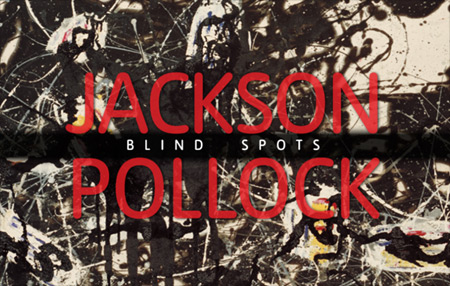
| HOME |
| NERVE |
| REVIEWS |
| ARCHIVE |
| EVENTS |
| LINKS |
| ABOUT US |
| CONTRIBUTORS |
| BACK ISSUES |
| CONTACT US |
Jackson Pollock: Blind Spots
 Tate
Liverpool
Tate
Liverpool
30th June till 18th October 2015
Reviewed by Helen Jackson
While many people best know American artist Jackson Pollock for his earlier, colourful and vibrant "drip paintings", Blind Spots, Tate Liverpool's current exhibition, focuses on a sudden change in direction towards the end of his turbulent life - to the "black paintings" or "black pourings". Not only are these monochromatic in style, but they represent a foray into the world of figurative art, and away from the abstract.
Many of the black pourings, some redolent of Picasso, others of Goya or Bosch, literally send a shiver down the spine, inviting us into terrifying yet irresistible worlds where demons seem to rule and mortals are fated to writhe. So in sharp contrast to the bright and breezy Summertime 9A 1948 (also in the exhibition), Number 8 1952 is a maelstrom of menace.
In this work, and others such as Number 20 1951, the black paint simultaneously delineates and disrupts the tormented souls within, leaving our imaginations to do much of the work.
And while the astonishing Portrait and a Dream 1953 sees a return to colour, its ambiguity of identity is still unsettling. Which is the portrait? Which is the dream? The work seems to weave a nest for portending nightmares. Trapped totems waiting to be activated, where will they hatch?
The first exhibition in a long time to feature so many of Pollock's later works, Blind Spots, is presented alongside Encounters and Collisions. Curated by one of America's most distinguished living artists, Glenn Ligon, this too can be unsettling - but ultimately inspiring as photographers, film makers and painters offer art as both a voice for the oppressed and a key to the search for identity. While Encounters and Collisions sees many artists represented, however, the ground floor of the gallery is given over to the work of just one: the Romanian Geta Bratescu.
But here, too, the quest for identity goes on - particularly, for me, in Portraits of Medea, a set of ten lithographs suggesting ways that multiple identities can be supported by a single scaffold.
The three exhibitions run until October 18th 2015. Geta Bratescu is free - but there is a charge for Blind Spots and Encounters and Collisions (although a single ticket secures entrance to both).